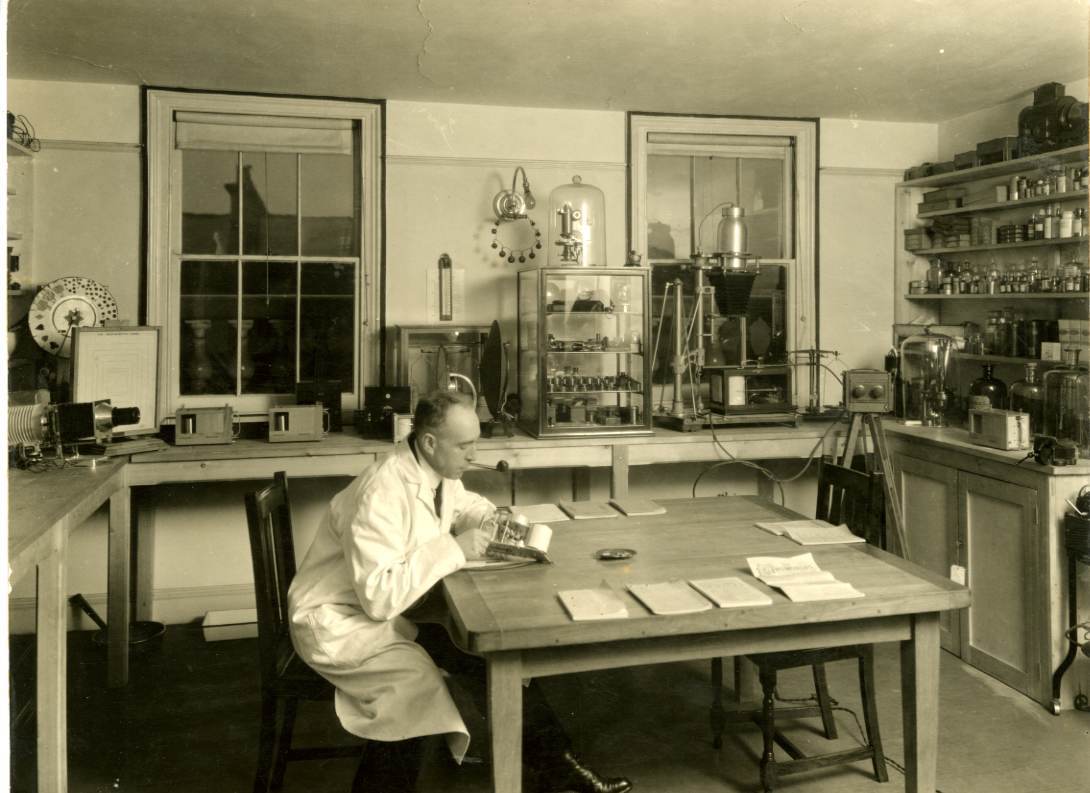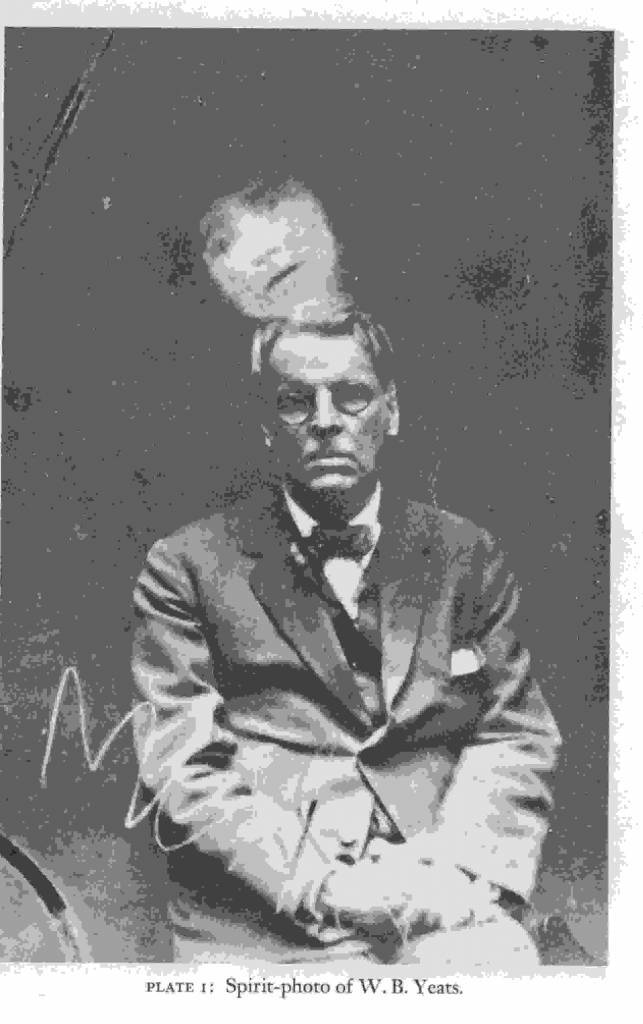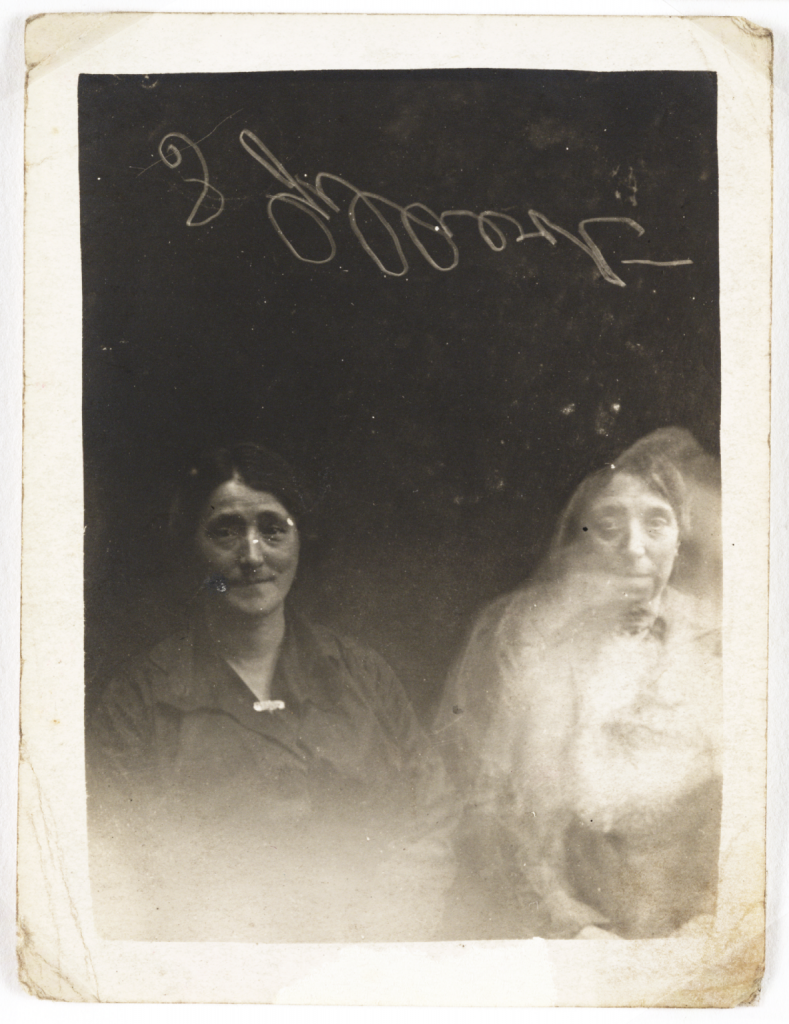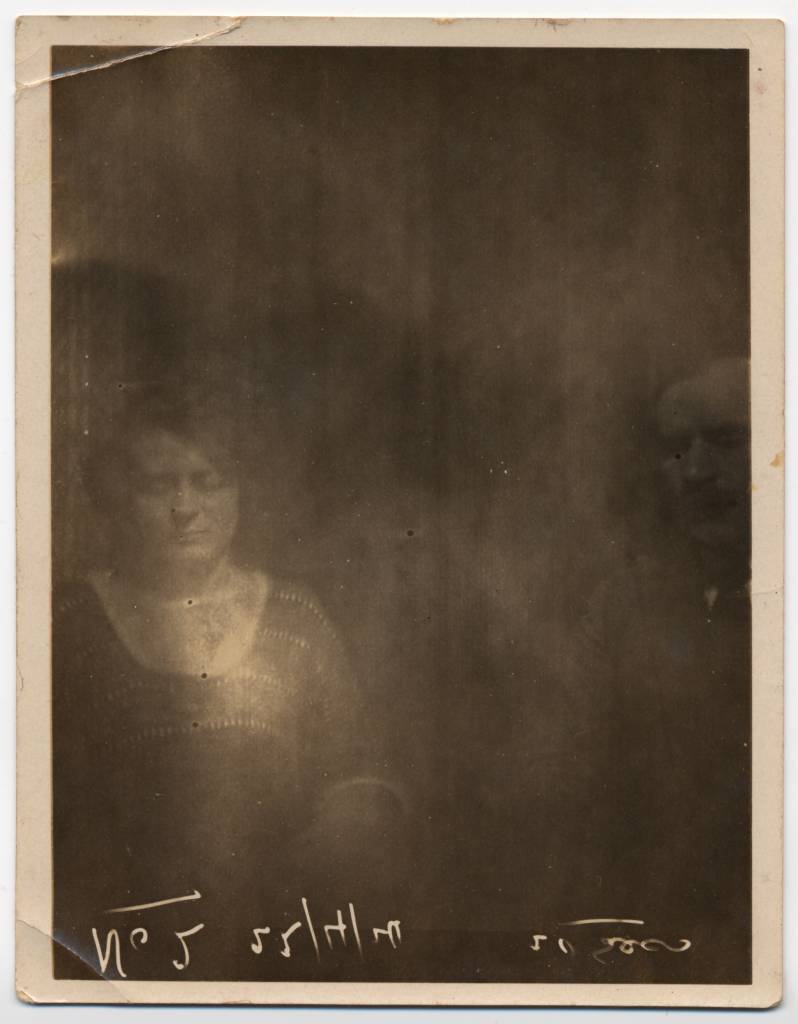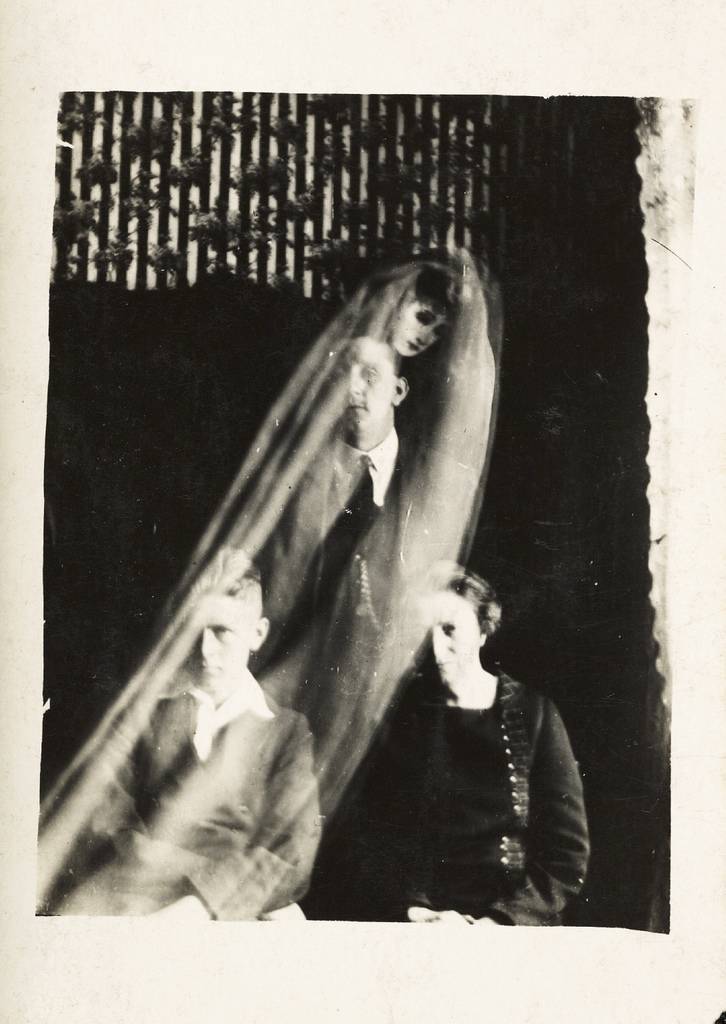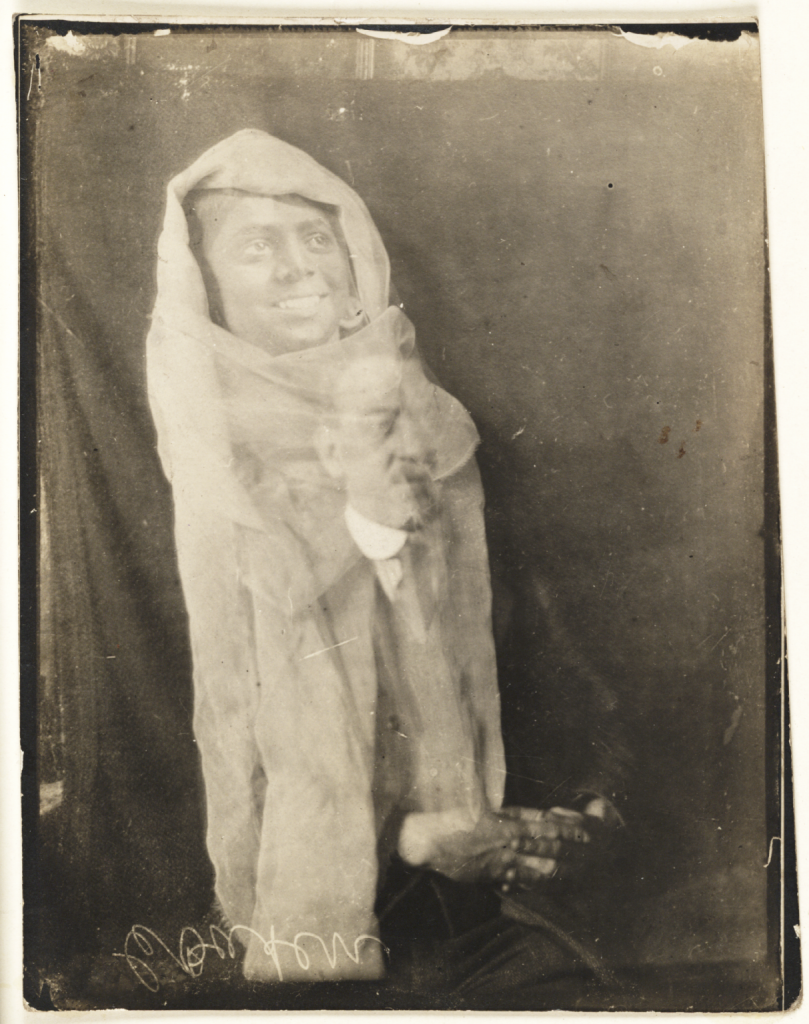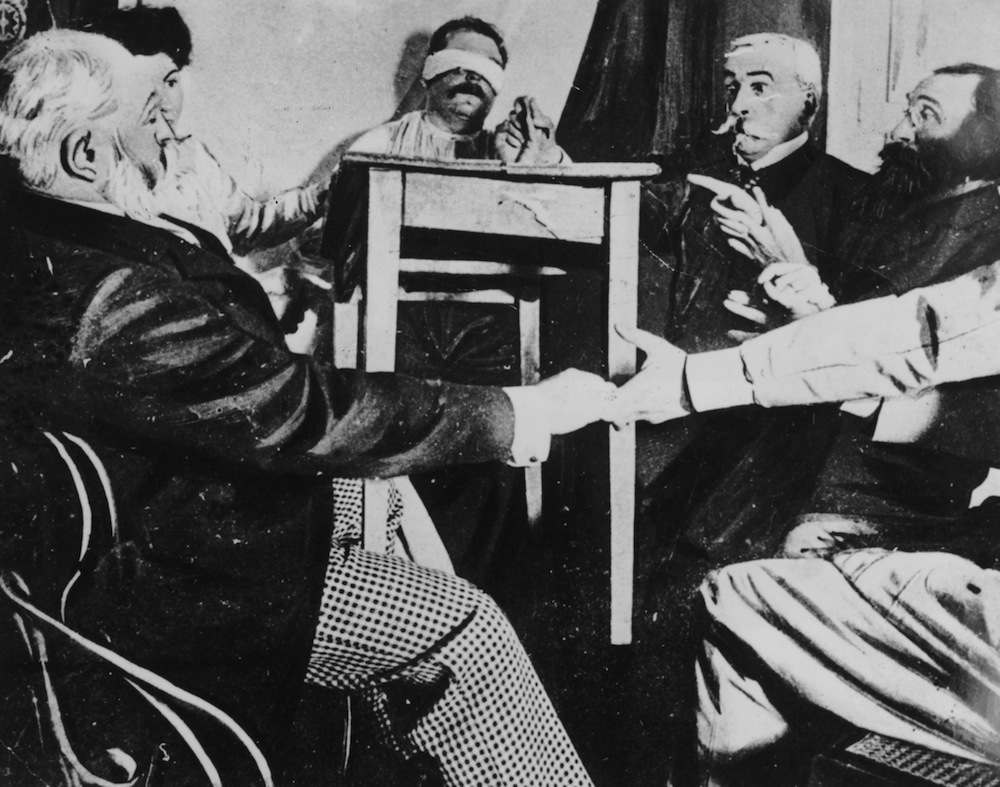
A group of people in France hold a seance in an attempt to make contact with the dead, circa 1870. (Photo by Hulton Archive/Getty Images)
Do you believe in ghosts?
William Hope (1863 – 8 March 1933) did. Maybe. More importantly, he knew that enough people believed in spiritualism to make a business from it. Hope was a pioneer in the filed of “spirit photography”. All around us are spirits. Invisible to the naked eye, these spirits could be recorded on cameras. And, as luck had it, Mr Hope had a camera and a studio. It’s worth contemplating that three quarters of a million British soldiers were killed during WW1 with one and a half million men seriously injured. Almost a third of all the boys and young men aged between 14 and 24 at the beginning of the war would end up being killed. It is entirely unsurprising that after the war there was an almost tangible sense of a ‘lost generation’ hanging over the country.
Hope offered comfort and mystery to the curious, lonely and bereaved. And he was a fraud.
All went well until the arrival in 1920 by Edward Bush, who sent Hope a photograph of a living person which he pretended was his dead son. Could Hope capture the deceased in a portrait with his loving father? Hope did. The dead boy hovered.
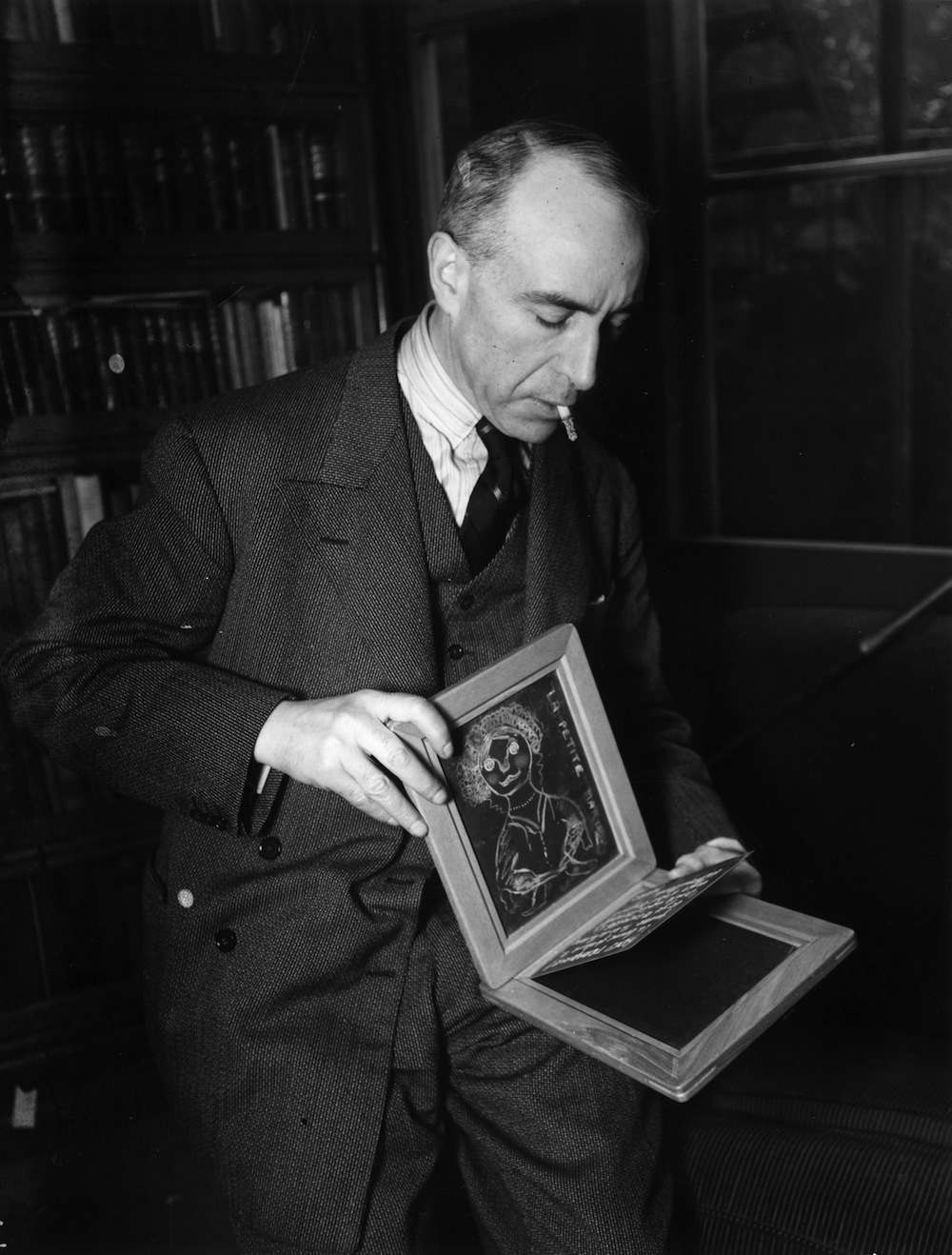
1932: Harry Price, Director of the National Society of Psychical Research showing how ‘spirit’ writing can be done between two apparently sealed slates. (Photo by General Photographic Agency/Getty Images)
The fakery continued a while until February 1922, when the Society for Psychical Research and the paranormal investigator Harry Price with James Seymour, Eric Dingwall and William Marriott tested Hope’s methods at the British College of Psychic Science.
Price wrote:
“William Hope has been found guilty of deliberately substituting his own plates for those of a sitter… It implies that the medium brings to the sitting a duplicate slide and faked plates for fraudulent purposes.”
The trap was set:
Price secretly marked Hope’s photographic plates, and provided him with a packet of additional plates that had been covertly etched with the brand image of the Imperial Dry Plate Co. Ltd. in the knowledge that the logo would be transferred to any images created with them. Unaware that Price had tampered with his supplies, Hope then attempted to produce a number of spirit photographs. Although Hope produced several images of spirits, none of his materials contained the Imperial Dry Plate Co. Ltd logo, or the marks that Price had put on Hope’s original equipment, showing that he had exchanged prepared materials containing fake spirit images for the provided materials.
Price later re-published the Society’s experiment in a pamphlet of his own called Cold Light on Spiritualistic “Phenomena” – An Experiment with the Crewe Circle. Due to the exposure of Hope and other fraudulent spiritualists, Arthur Conan Doyle led a mass resignation of eighty-four members of the Society for Psychical Research, as they believed the Society was opposed to spiritualism.
The Photography Museum notes the reaction:
The Society for the Study of Supernormal Pictures was established as a rival to the Society for Psychical Research (S.P.R.). The S.P.R. was founded in 1882 by a group of scientists intent on making an organized and systematic inquiry into “the large group of disputed phenomena referred to as mesmerism, psychism, spiritism.”
The S.S.S.P. was launched in 1918 in London and by May of 1920 issued a statement declaring:
The members here present desire to place on record the fact that after many tests and the examination of thousands of pictures, they are unanimously of the opinion that results have been obtained supernormally on sensitive photographic plates under reliable test conditions. At present the members do not undertake to explain how the results have been obtained, but they assert that they have undoubtedly been secured under conditions excluding the possibility of fraud.
Ghostly Images writes:
William Hope headed the Crewe Circle in the 1920s. In striving to be free of fraud they invited sceptics to examine their equipment, and even allowed sitters to bring their own plates. Harry Houdini sought to expose their trickery in his book A Magician Among the Spirits. A friend of Houdini’s asserted that they were using sleight-of-hand to switch the plates while passing around hymn books.
The story is told by Houdini is thus:
In December 1921 I tried to visit Mr. Hope and have some Spirit photographs made but I was informed that his engagements would keep him busy for months and that I would have to wait my turn. I then got in touch with a friend of mine by the name of De Vega who lives in Glasgow and asked him if he would not see Hope and arrange to sit for a photograph. After considerable correspondence between De Vega and Hope the latter agreed to make the photographs provided De Vega would go to Crewe. De Vega assented to this, and an appointment was made and the sitting took place. The following account of DeVega’s experience is taken from a full report which he sent me.
Dec. 16, 1921.-Arrived at No. 144 Market Street, the door was opened by an elderly lady. I asked if Mr.Hope was in and presently he came down. I told him that a well known member of the Spiritualist Society and a man known to be a collector of Spirit photographs sent me and that seemed to be sufficient for Mr. Hope. I had brought my own camera along and asked him whether the pictures could be taken with it. However, he said he used his own camera but would let me investigate it all I wanted to. He told me he could not possibly photograph me that forenoon as there was another gentleman coming but arranged for two o’clock.
I watched Market Street, from a distance, all the forenoon but saw no one go in. I arrived there promptly but it was 2 :30 before Mr. Hope arrived. A Mrs. Buxton joined us. She, Hope and myself sat around a small table. They sang hymns, said a prayer and asked the table if all was favorable.
At his request I placed my packages of plates on the table. They placed their hands above them and sang again. Hope suddenly gave a quiver and said, ‘Now we will try.’ He showed me the dark room, which is a small arrangement of about six feet high, three feet wide and five feet long. There were two shelves and on these were dusters, cloths, bottles of chemicals, a lamp, etc. The lamp is an old affair lit by a candle. The room is so very small that when two people are in it there is no
room to move about.He next showed me the camera and asked me to examine it. I gave a glance at it and told him I did not doubt his word, which seemed to please him a great deal. I thought if it was a fake he would not allow me to examine it as closely as he asked me to. It was an old make, one fourth plate, studio camera and had no shutter, but worked with a cap over a lens (the cap was missing). He next showed me the dark slide. It was an old-fashioned, double wood end slide. I examined it very closely but it was unprepared.
The studio itself is a little glass hot-house arrangement built on to the side of the house. A green curtain is hung at the one end at which the sitter sits.
We went again into the dark room to load the plates. He gave me his slide and told me to leave two of my own dark slides down in front of the light as he would try my camera too. I opened my plates and placed two in his dark slide and closed it. It was placed on the under shelf and I could see it faintly. He then asked me to open my own two slides slightly and sign my name on them. (I signed J. B. Gilchrist.) As I signed them he moved the lamp to let me see better. This threw the one fourth plate in the shadow. Mter that he handed me the one fourth plate slide to sign the two plates in the same way.
I am sure, although I did not actually see him, that the slide I loaded, was changed for another one. It was too dark to see under the level of the shelf. I, for a moment, considered letting my pencil slip and spoil the plate and load in another from my packet but I thought advisable to let things go on as I would then see just what his usual procedure was. I wondered at the time why I could not have been told to take the plates from the package, sign them and then place the plates in the slide and place the slide in my pocket until they were to be exposed. Why was it necessary to sign my own plates in my dark slide at all? In fact, there was no necessity
for me to take my slide in the dark room.We went back into the studio, again I was asked to examine the camera. However, I took up my position in front of the camera. Mrs. Buxton stood at one side and Mr. Hope at the other. The dark focusing cloth was low over the lens (the cap being missing) and the slide open. Mrs. Buxton and Hope sang a hymn and each took an end of the cloth, uncovering the lens. This was repeated with other plates as well.
Now my camera was set up. I was asked to open the slide and show them how the shutter worked. The exposure was made. He placed his hand in front of the camera, covering the lens and asked me to open the slide myself as he did not want to touch it. Now why did he close the lens in that way? It would have been simpler to have pushed down the open front of the slide, closing it, but I believe that on his hand was a spot of some radiant salt or some such substance that would cause a light spot to appear on the negative, such as appeared
on that plate when it was developed. Holding his hand in front of the lens while an exposure was heing made is such an unnatural action that I believe that was the cause
of what he called ‘a Spirit Light,’ when it was developed. The next photograph I told him to press the release again to close the shutter. He did so.We then adjourned into the dark room to develop the plates. The two, one fourth plates were placed by me, side by side, in a dish and the two three and a half by two and a half in another dish and developed. By pouring the developer from one dish to another, one of the one quarter plates flashed up dark. I remarked that one was coming up very quickly and he replied that ‘when they come up like that it is a good sign for it is very likely there is an “extra” on them.’ I said no more but in my experience and knowledge of photography, such an occurrence is impossihle unless the plates have heen previously exposed.
The two plates were taken from the same packet, loaded into the dark slide at the same time, with the same dark room light and the same distance from the light. They were then exposed on the same subject immediately after each other; the same length 0/ exposure being given (I counted them mentally) with the same aperture of lens. The plates were then placed side by side zn thesame dish 0/ developer and I contend that the image must come up at a uniform speed on both plates and that it is impossible for one to flash up before the other and darken all over unless it was previously exposed, especially when there was no variation in the light when the exposure was made, it being three P.M., December 16,
clear sky, no sunshine.An ‘extra’ did appear on this (one fourth plate). It is a clean shaven face above mine and drapery hanging from it. On my own three and a half by two and a half a light splotch is over my face. Mrs. Buxton informed me that it was a ‘Spirit light’ but Mr. Hope believed he saw the faint features of a face in it.

March 1923: Writer of the Sherlock Holmes mysteries, Dr Arthur Conan Doyle (1859 – 1930) with his family on Waterloo station en-route for the USA. (Photo by Topical Press Agency/Getty Images)
Spiritualists were outraged. Doyle strongly attacked the aforementioned Price and his methods. This was also instrumental in Doyle writing a book The Case for Spirit Photography in 1923. He wrote:
“I hope to make it clear to any unprejudiced mind that there is overwhelming evidence that we have in Mr. Hope, a man endowed with most singular powers, and that, instead of persecuting and misrepresenting him, it would be wiser if we took a sympathetic view of his remarkable work, which has brought consolation to the afflicted, and conviction to many who had lost all belief in the independent life of the spirit.”
Mr Hope’s work can be seen below:
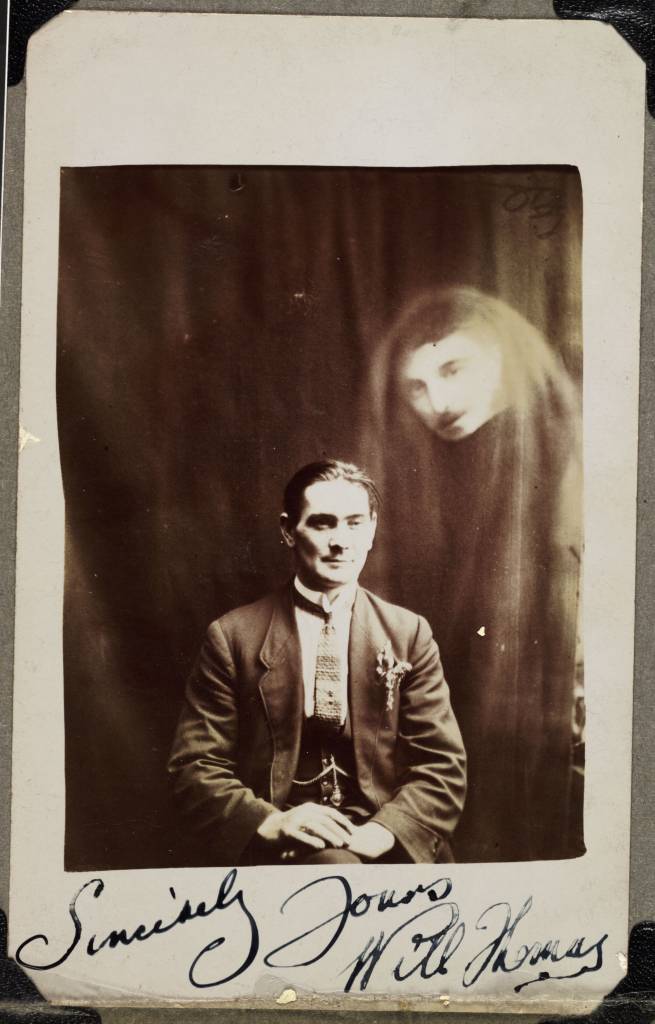
A photograph of Will Thomas, taken by William Hope (1863-1933). A man’s face appears in a haze of drapery on the right of the photograph. Thomas, a medium from Wales, did not recognise the superimposed image. Thomas has signed the bottom of the photograph, ‘Sincerely Yours Will Thomas’ – perhaps this indicates a friendship with Hope. Hope’s spirit album photographs use double and even triple exposure techniques to render the appearance of ghostly apparitions around the sitter. Hope founded the spiritualist society known as the Crewe Circle and his work was popular after World War One when many bereaved people were desperate to find evidence of loved ones living beyond the grave. Although his deception was publicly exposed in 1922, he continued to practice.
Would you like to support Flashbak?
Please consider making a donation to our site. We don't want to rely on ads to bring you the best of visual culture. You can also support us by signing up to our Mailing List. And you can also follow us on Facebook, Instagram and Twitter. For great art and culture delivered to your door, visit our shop.

